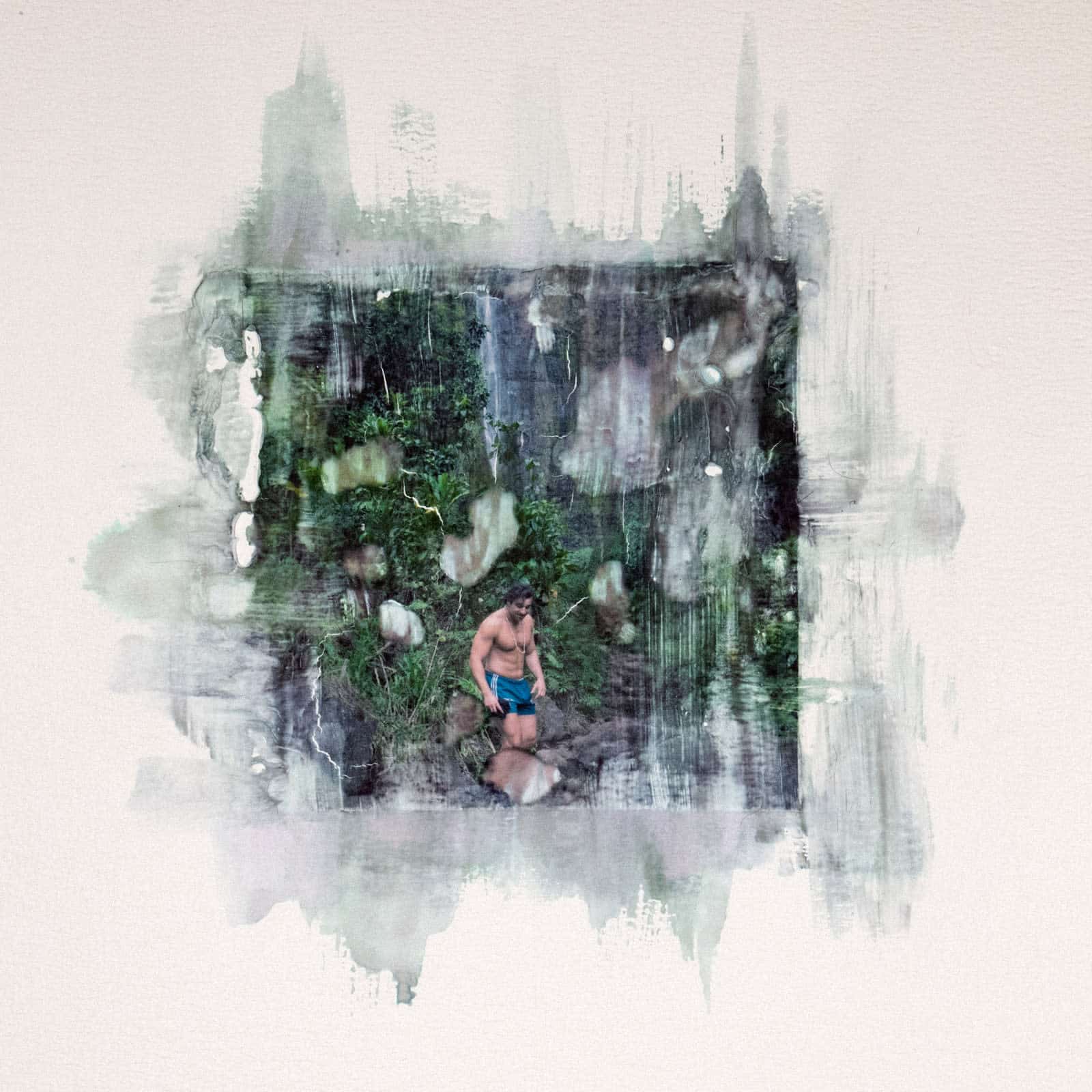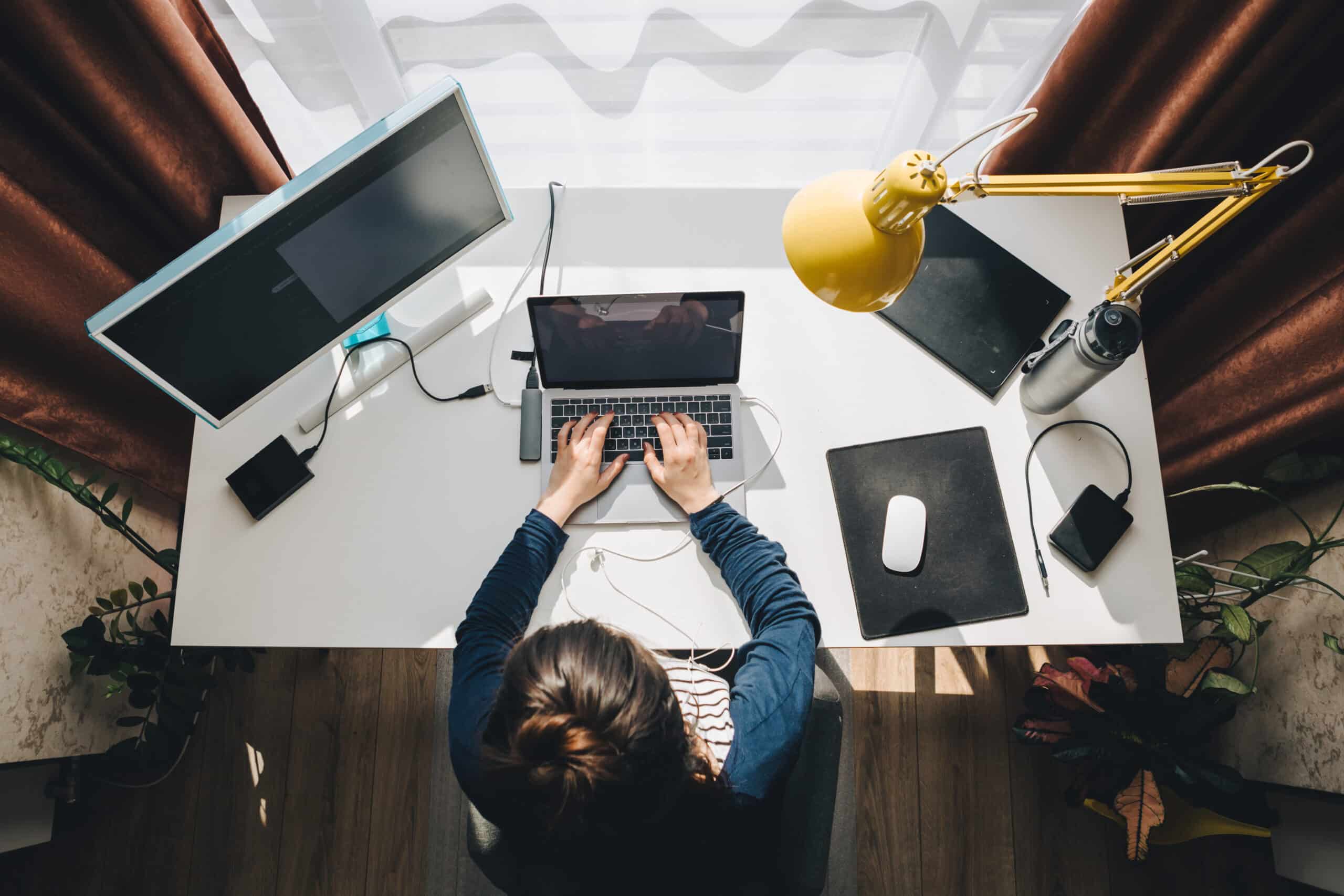Bei einem kürzlichen Besuch auf Hawaii hat der Fotograf Lawrence Sumulong beschloss, nach "den Rissen in der Fassade" von Mauis perfektem Image zu suchen. Nach Angaben der Regierung von Maui County werden etwa 80% jedes Dollars auf Maui und den Nachbarinseln Molokai und Lanai von der Tourismusindustrie erwirtschaftet. In seiner Serie Lacuna, Sumulong zeigt eine andere Sicht auf Maui, eine Perspektive, die über das touristische Erlebnis hinausgeht.
Sumulong konzentrierte sich auf übersehene historische Stätten und "suchte nach Szenen und Momenten, die die sozialen Realitäten und Spannungen darstellen, die zeigen, wie die Insel ausgebeutet wird". Zurück in New York City, wo er lebt und arbeitet, ließ Sumulong seine Fotos als essbare Zuckergussschichten für Torten drucken und übertrug diese Abzüge mit einem Pinsel auf Aquarellpapier. Das Ergebnis ist eine Serie verschwommener, rissiger und zuckriger Bilder, die einen abstrakten Blick auf die Insel bieten.
"Als Filipino, der auf dem Festland geboren und aufgewachsen ist, habe ich mir Hawaii als Schauplatz dafür vorgestellt, wie Rassenunterschiede in diesem Land bewertet, bewahrt, fetischisiert, konsumiert und zu Waren gemacht werden", sagt Sumulong. "Während meines Aufenthalts auf der Insel fühlte ich mich ständig hin- und hergerissen zwischen dem Gefühl, dass es okay ist, im Urlaub ein Tourist zu sein, und der aktiven Auseinandersetzung mit der Geschichte des Staates und der Insel", fügt er hinzu. Als er sich über Maui informierte, erfuhr er, dass die Zuckerplantagenindustrie auf der Insel in der Vergangenheit die Arbeitskraft ungebildeter philippinischer Einwanderer ausgebeutet hatte. "Das deckte sich mit der Tatsache, dass ich während meines Aufenthalts oft die einzige Minderheit war und dass die einzigen Minderheiten, die ich sah, philippinische Arbeiter waren, die das Timeshare, in dem ich Urlaub machte, reinigten oder auf den Rasenflächen anderer Grundstücke arbeiteten.
"Die letzte Ebene war die Tatsache, dass Maui ein beliebtes Reiseziel für Flitterwochen ist, was mich an übersättigte Sonnenuntergänge und Hochzeitstorten erinnert hat. Da lag es nahe, etwas Essbares aus Zucker zu bedrucken, denn bei dieser Erfahrung ging es zum einen darum, wie wir konsumieren, und zum anderen darum, eine Geste für die Ressource Zucker zu machen, die mein Volk mit angebaut hat.
Mehr von Lawrence Sumulongs Fotografien findest du auf seiner Website, gebaut mit Format.

Ein einzelnes verschlossenes Tor umschließt ein offenes Feld auf der Ke'anae-Halbinsel, die durch den Lavastrom aus dem Haleakala-Krater entstanden ist. Die Steinkirche im Hintergrund wurde 1856 erbaut und ist das einzige Gebäude, das nach dem verheerenden Tsunami von 1946, bei dem 24 Menschen starben, noch steht. Heute ist die Gegend ein beliebter Zwischenstopp, an dem Touristen auf der berühmten "Road to Hana" Bananenbrot kaufen können.

Ein Tourist beobachtet einen philippinischen Timeshare-Mitarbeiter, der in Kihei, Maui, ein Kühlaggregat in Industriegröße trägt.

Inmitten der beliebten Campingplätze im Waiʻanapanapa State Park liegt ein privater und alter Friedhof, der Honokalani 'Ohana Cemetery.

Ein weißes Auto, das von Laub überwuchert ist, in Kihei, Maui.

Ein hawaiianischer Junge, der sich im Hintergrund des Waiʻanapanapa State Park versteckt, ordnet Lavagestein und Korallen auf dem privaten und uralten Honokalani 'Ohana-Friedhof.

Drei Aloe-Stängel, die aus einem Pflanzenbeet in Kihei, Maui, entnommen und in eine Ausgabe der Lokalzeitung eingewickelt wurden, Maui Zeit, dessen Schlagzeile in dieser Woche lautete: "Das Problem mit dem Kulturerbe-Tourismus und warum der fortgesetzte Missbrauch der hawaiianischen Kultur falsch ist".

Ein weißer Tourist posiert für ein Foto, das er für sein Dating-Profilbild verwenden möchte, mit den Waimoku Falls im Hintergrund. Auf einem Schild, das den Ursprung des Wasserfalls erklärt, steht Er wai makamaka 'ole oder "Wasser, das keinen Freund erkennt".

Ein hawaiianischer Tagelöhner arbeitet in einem Loch in Kihei, Maui.

Ein weißes Boot, das von Laub überwuchert ist, in Kihei, Maui.

Ein Schild, das in der Bucht von La Perouse gefunden wurde. In der Gegend gibt es viele archäologische Stätten, darunter Fischerheiligtümer, Salzpfannen und heiauoder religiöse Plattformen. Sie ist der Ort der jüngsten vulkanischen Aktivität auf Maui. Der hawaiianische Name der Bucht lautet Keoneʻoʻio. Sie wurde später nach dem französischen Entdecker Captain Jean-François de Galaup, comte de La Pérouse, benannt.

Auf dem Gipfel des massiven Schildvulkans, Haleakalā oder "Haus der Sonne" am Abend.
Weitere Fotoserien:
Nukleartourismus an Amerikas Raketenstandorten fotografieren
Ausgebrannte junge Briten in "Good Times for Free
Fotografieren von Gesichtern, Religion und Erinnerung in San Salvador de Jujuy













